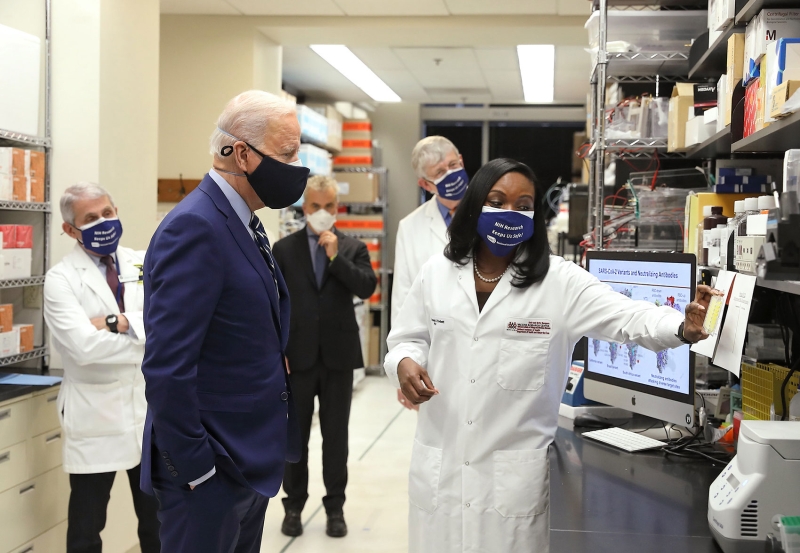
Setting the stage for COVID-19 vaccine development
One of the most productive National Institute of Health (NIH) research facilities in the global effort to create effective COVID-19 vaccines was planned by Page’s Laboratory Design team, many of whom form part of our current Life Sciences leadership today. “Building 40”, as the Vaccine Research Center (VRC) is known locally, opened in 2000 on the main NIH campus in Bethesda, MD. Page’s lab planning team continued to make adjustments to the building as late as 2004, adding critical capability in x-ray crystallography, a BSL-3 lab, and a fermentation suite for vaccine production.
The decision to build the VRC was the result of a 1996 meeting with Dr. Anthony Fauci and President Bill Clinton as a response to the AIDS crisis, which by then had killed more than 350,000 people in the United States and another six million globally. Since its completion, the VRC has played a major role in much of the federally funded vaccine research for all types of vaccines. It was especially important in the development of the current COVID-19 vaccines.
Responsive to new initiatives
Page designed the laboratories and vivarium associated with the VRC to adapt responses to new research initiatives into different types of viruses. Creating a collaborative environment was a big driver in determining the form of the labs. The first phase featured a single large open lab on each floor that spanned the entire floor, a novel idea at the time. Time has proven the effectiveness of the design. Few labs today achieve the intentional intimacy of the VRC.

Since then-President Bill Clinton’s appearance at the opening dedication ceremony, every United States president has visited the Vaccine Research Center for a review of the state of the research.
What the design team said
“We knew this was an important project and we knew we were doing something unique. Finishing up construction and watching PI’s move into the labs, we never expected that every subsequent US President would stand in those labs and that the research in that building would so profoundly affect lives 20 years later. It seemed unimaginable, but we have learned to expect that our labs will lead to amazing discoveries. We don’t underestimate the power of science.”
– David McCullough, Page Principal and Senior Lab Planner
What The New York Times said
Of two researchers at the VRC, a January 2022 article said, “They got to talking… Though they never expected it, their happenstance collaboration would prove critical for understanding the scary new [COVID-19] virus that would emerge more than a decade later.”
– Halting Progress and Happy Accidents: How mRNA Vaccines Were Made by Gina Kolata and Benjamin Mueller